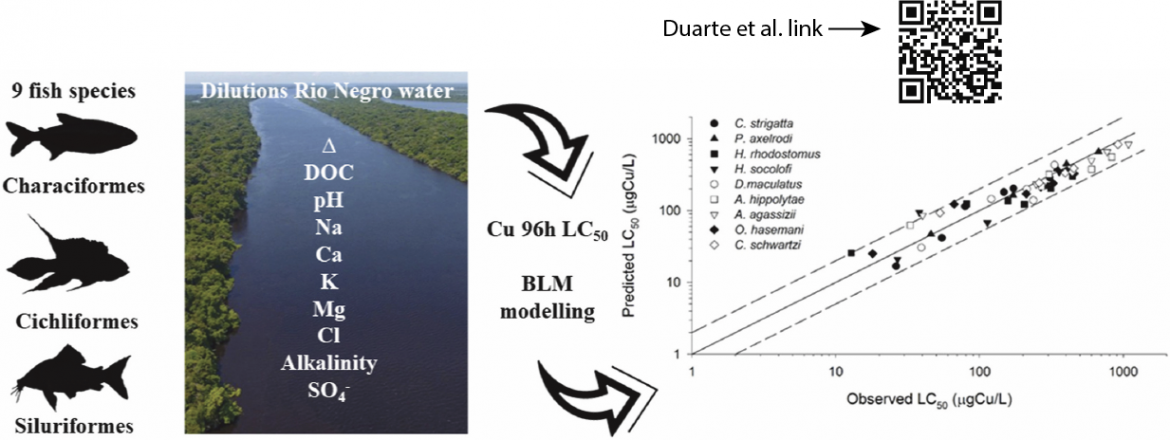
Rafael M. Duarte, Anne Crémazy, Chris M. Wood, Vera M.F. Almeida-Val, Adalberto L. Val. The biotic ligand model as a promising tool to predict Cu toxicity in amazon blackwaters. Environmental Pollution
Abstract
The Rio Negro basin of Amazonia (Brazil) is a hotspot of fish biodiversity that is under threat from copper (Cu) pollution. The very ion-poor blackwaters have a high dissolved organic carbon (DOC) concentration. We investigated the Cu sensitivity of nine Amazonian fish species in their natural blackwaters (Rio Negro). The acute lethal concentration of Cu (96 h LC50) was determined at different dilutions of Rio Negro water (RNW) in ion- poor well water (IPW), ranging from 0 to 100%. The IPW was similar to RNW in pH and ionic composition but deficient in DOC, allowing this parameter to vary 20-fold from 0.4 to 8.3 mg/L in tests. The Biotic Ligand Model (BLM; Windward version 3.41.2.45) was used to model Cu speciation and toxicity over the range of tested water compositions, and to estimate lethal Cu accumulations on the gills (LA50). The modeling predicted a high relative abundance of Cu complexes with DOC in test waters. As these complexes became more abundant with increasing RNW content, a concomitant decrease in free Cu2+ was observed. In agreement with this modeling, acute Cu toxicity decreased (i.e. 96 h LC50 values increase) with increasing RNW content. The three most sensitive species (Hemigrammus rhodostomus, Carnegiella strigatta and Hyphessobrycon socolofi) were Characiformes, whereas Cor- ydoras schwartzi (Siluriformes) and Apistogramma agassizii (Cichliformes) were the most tolerant. These sensi- tivity differences were reflected in the BLM-predicted lethal gill copper accumulation (LA50), which were generally lower in Characiformes than in Cichliformes. Using these newly estimated LA50 values in the BLM allowed for accurate prediction of acute Cu toxicity in the nine Amazonian fish. Our data emphasize that the BLM approach is a promising tool for assessing Cu risk to Amazonian fish species in blackwater conditions charac- terized by very low concentrations of major ions but high concentrations of DOC.